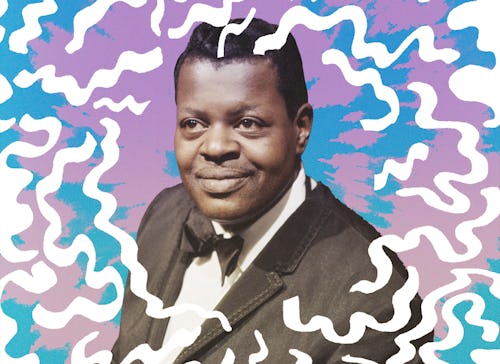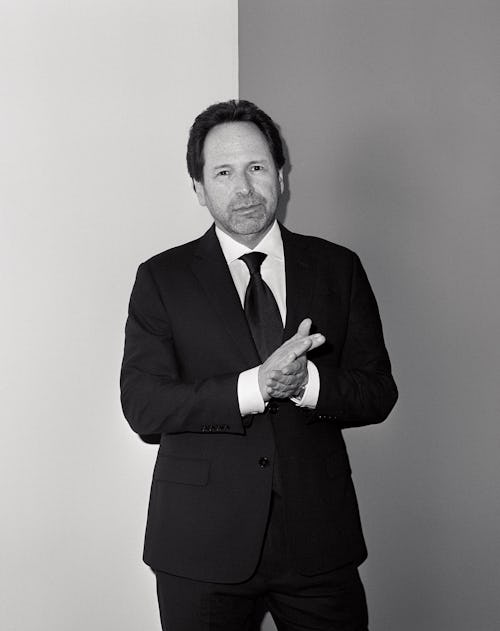
When the great Canadian pianist Oscar Peterson first toured Jim Crow America, he made a plan, and he stuck to it. Peterson said, “If the only way I was going to make it was to frighten the hell out of everybody pianistically—if that’s what it took to get the attention—then that’s what I would do my best to do.”
Footage of Peterson (1925-2007) making the comment appears in Oscar Peterson: Black + White, a new documentary by veteran filmmaker Barry Avrich that premieres on February 15 on Hulu. The film slightly recasts the great piano virtuoso. During his life, he was well known for his formidable technique and charming, even ebullient presence, but some of his peak came during an era of significant Black empowerment, and the great pianist was occasionally shrugged off as an entertainer rather than a freedom fighter, a blanket charge that even Louis Armstrong faced. But the documentary is corrective, dwelling on Peterson’s “Hymn to Freedom,” a song that was every bit as important to the Civil Rights movement as Nina Simone’s “Mississippi Goddamn,” though it is far less iconic. This song, and the fact that Peterson’s star has faded a bit in the music community since his death in 2007, provided Avrich’s motivation in making the film.
“When you say jazz, many names came come up before you mention Oscar,” said Avrich in a Zoom call last week. “I think part of that is that he spent most of his life in Canada. Part of it is that there wasn't a sense of drama or a scandal that followed him like a Miles [Davis] or a [John] Coltrane.” He continued, “why isn't he on that Mount Rushmore? Let's go back and look at the sheer musicology the prodigy that he was, the musician and composer that he was, and you just can't really unpack jazz without mentioning him.”
This is undeniably true, though the Rushmore problem is probably more one of framing than appreciation. Reducing any cultural manifestation to a top four is usually unnecessarily reductive. Creating a Rushmore for jazz in, general, would create a brawl between advocates for Armstrong, Coltrane, Davis, Duke Ellington, Charlie Parker, and Thelonious Monk. Is it a Rushmore if the category is piano virtuosos who emerged before bebop revolutionized jazz? That monument would likely include Peterson, his idol Art Tatum, Earl Fatha Hines, and maybe Erroll Garner, though supporters of Teddy Wilson, Nat King Cole and Mary Lou Williams would want to file briefs on behalf of these keyboard masters.
Monumental questions notwithstanding, Peterson is an all-time great, and his music is an emblem of the transcendent qualities of virtuosity. OP’s music was a reminder that all things are possible, and that their realization is a thing of beauty. He lived a remarkable life not only in his jazz accomplishments, but by any standard.
Peterson was a musical prodigy. He was born in Montreal and grew up in the predominantly Afro-Canadian neighborhood of Little Burgundy, where he encountered jazz at a young age. He began on both the trumpet and piano, but a bout of tuberculosis when he was 7 forced him to drop the horn for the keyboard. By the time he was 14, he was playing professionally with leading musicians in his hometown. The great impresario Norman Granz heard him in 1949, brought him to New York, and placed him on his enormously popular Jazz at the Philharmonic tours, which enabled him to play with and alongside many if not most of the jazz legends of the era. For instance, there is footage in the film of him playing alongside Ella Fitzgerald, and commenting on the experience. Peterson followed Cole, another of his idols, in creating a piano, bass, and guitar trio, and his work helped set the template for several drummer-less chamber jazz ensembles that thrived in the late ‘50s and early 60s. Archival clips demonstrate the deep rapport that Peterson had with his bandmates, bassist Ray Brown and guitarist Herb Ellis. In the decades that followed, he had a star-studded career that included eight Grammy Awards, and dozens of other citations and honors. Across Canada, schools and concert halls are named for him. There is even a statue of him in Ottawa.
Avrich is Canadian, and he’s been a Peterson fan since hearing his parent’s OP albums as a kid, but that wasn’t his prime motivation in making Oscar Peterson: Black + White. The director who is well-known for documentaries like Blurred Lines: Inside the Art World and David Foster: Off the Record had a longstanding desire to do a music documentary. The passion was ignited 20 years ago when he saw Standing in the Shadows of Motown at the Toronto International Film Festival. “I fell in love with how the audience had the ability to get lost in performances that the Funk Brothers would play throughout the film, and never forgot that.” Then it was rekindled a decade later when he saw 20 Feet From Stardom. He kept thinking, “I want to do that, and, well, how can I do that?”

When he settled on Peterson, he faced a director’s nightmare offset by two dream scenarios. The bad news was that there wasn’t any home video footage of Peterson a la the Rene Elizondo Jr. videos in Janet Jackson; but due to the shutdown of tour schedules as a result of the COVID-19 pandemic, Avrich was able to get an A-List of luminaries to sit and discuss Peterson. The film’s highlights feature greats like Herbie Hancock, Billy Joel, Jon Batiste, and others looking as if they could tell stories all day about how much they loved Peterson’s music. The other big advantage for Avrich is that Peterson was active in the ‘60s and ‘70s, when cameras were often rolling for official broadcasts of his concerts. That meant that Avrich had days, if not weeks’ worth of stellar performances to choose from. When asked what was left on the cutting room floor, Avrich had to stop himself from reciting chapter and verse on the performances.
Yet the film failed to scratch the itch, so to speak. Avrich would like to do another documentary, though he’ll be hard-pressed to find another jazz great who so thoroughly succeeded at his aim.







